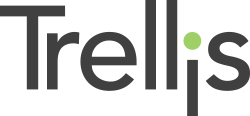
Participant-driven lawsuits are on the rise, and employers are facing heightened scrutiny of the way they manage their retirement plans. In today’s continually-evolving regulatory and legal environment, it’s more important than ever to make sure your organization’s retirement plan is both effective and compliant. A well-structured retirement plan governance program can help you pursue these goals when aiming to limit fiduciary risk and improve plan performance, while striving to boost participant outcomes.
What is retirement plan governance?
Simply defined, governance outlines the processes and policies for managing a retirement plan as well as the roles and responsibilities of everyone involved. It provides a framework for effective decision-making on all aspects of the plan, from plan documents and investments to operations and financial reporting.
Why is plan governance important?
The stronger your governance, the stronger your plan. An effective governance program details processes, roles and responsibilities for all parties involved in managing the plan and helping support its objectives. It should address how duties are delegated and to whom, and the documentation and oversight of all responsible parties to the plan. Perhaps, most importantly, proper governance procedures help reduce plan fiduciaries’ exposure to personal liability for actions and decisions made on behalf of the plan and its participants. Finally, a successful governance program enables plan fiduciaries to work together towards the same goals, which can potentially improve plan performance and participant outcomes.
What can you do about it?
Governance best practices include documenting every aspect of the plan’s day-to-day management, along with long-term operating procedures, such as:
- Proof of the existence of a retirement plan committee(s) with key fiduciary responsibilities (including meeting minutes)
- Plan documents containing key provisions such as eligibility, benefits, contribution limits and distributions
- Investment management and monitoring procedures — an Investment Policy Statement (IPS) is optional but highly recommended — along with documentation of how the plan’s investment menu fits the criteria in your IPS, investment monitoring and any discussions about the IPS
- Compliance monitoring, stakeholder responsibilities and statements of accountability
- Participant communication guidelines that detail how the plan will educate and support employees to help them understand the perks of participating and how to make informed investment decisions
- Annual plan review and reporting criteria and documentation of related activities, including Forms 5500 filings, audit reports and participant plan disclosures[1]
Of course, all of this documentation must be updated and maintained on an ongoing basis.
Wrapping It Up
Straightforward retirement plan governance guidelines and best practices help toward ensuring that your plan is compliant and continues to run smoothly, and that fiduciaries can confidently and successfully fulfill their responsibilities. Moreover, having carefully documented plan governance procedures can assist you in preparing for and managing plan audits and compliance reviews, increasing your plan’s efficiency and improving your participants’ experience1.
To recap, an effective governance program:
- Makes decision-making less complex
- Reduces risk exposure for the plan and its fiduciaries
- Supports plan and participant objectives
- Seeks to improve financial controls1
While governance programs are typically established when the plan is adopted, it’s never too late to develop or update governance procedures. Keep in mind, an effective governance program provides a carefully documented record of the plan fiduciaries’ efforts to manage and maintain the plan prudently in the best interests of its participants and their beneficiaries. Doing so helps all parties clearly understand and carry out their roles and responsibilities, and it helps manage their fiduciary liability.
Is it time to review your plan governance program? We can help. Contact us today for a comprehensive evaluation of your governance processes and policies.
[1] TIAA. “Plan governance toolkit.” March 2017.
